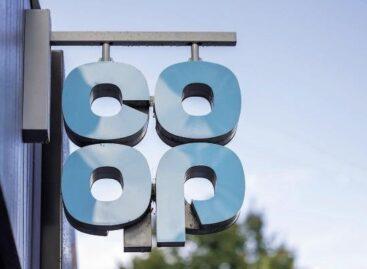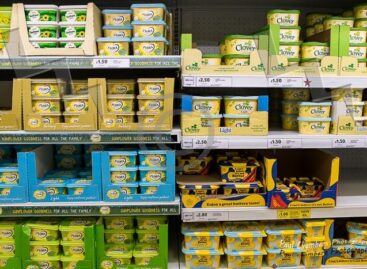Price swing on the playground of inflation
At the Business Days conference Ágnes Szűcs-Villányi, NielsenIQ’s regional leader of analytics and the company’s managing director, Erik Vágyi gave a presentation together.

Ágnes Szűcs-Villányi
regional leader of analytics
NielsenIQ

Erik Vágyi
managing director
NielsenIQ
They told that the economic situation in Eastern Europe and in Hungary is very much like a swing. Lots of consumers are planning their spending with much bigger care than before, and consumer preferences are changing all the time.
In Q2 2022 FMCG value sales grew by around 17% in Eastern Europe, while volume sales practically didn’t change. In Hungary value sales were up 14.9%, and this came together with a decrease in volume sales as prices elevated by 15.4%. From December to August, the proportion of consumers who think their financial perspectives are rather bad grew from 50% to two thirds. NielsenIQ’s confidence index dropped from 91 points in December to 74 points in August.
Thrivers and strugglers
During the pandemic NielsenIQ divided consumers into five different groups. Those are in the best situation who belong to the “thriver” and “unchanged” categories – this summer a bit less than one quarter of shoppers were classified like this. Most consumers fell into the “cautious” category, whose financial situation didn’t worsen, but they are very careful about their spending. There are 20% of consumers in the “struggler” and another 20% in the “rebounder” groups. The former saw their financial situation turn for the worse, while the latter were able to improve their situation after a negative period.
Shopping list, price monitoring and spending less
As economic conditions are getting worse, consumers are cooking more at home, cut back on unnecessary spending, and spend less on clothes and beauty products. Globally the most frequently used strategy for saving money is purchasing products in promotion. This is followed by stopping to buy certain products and switching to private labels. In Hungary the number one reaction is downgrading to cheaper products. The good old shopping list has been reborn: the proportion of shoppers who plan what they will buy in advance increased from 72% to almost 90%. At the same time instead of 52% now 37% say they also buy things they didn’t plan to purchase. There has been a change in shopping frequency too: more than 60% said they go shopping several times a week.
Price flexibility’s role in planning promotions
The price sensitivity of shoppers influences not only product prices, but also promotions. For instance in the case of beer the levels of both normal and promotional price flexibility are high. This means that shoppers react to promotions well, and if prices increase they typically buy less. However, different retail channels work differently, as in hyper- and supermarkets a good promotion campaign can result in volume sales growth, but in a petrol station shop customers buy whichever beer is available. We can say that the majority of beer SKUs doesn’t use an optimal promotional strategy. This is a key point, as the proportion of sales in promotion is very high in the Hungarian FMCG sector – it is way above the EU’s average.
The key to success
There is no universal strategy or trend, because consumer reactions keep changing and the channels, categories and products are all different, especially in the current turbulent economic environment. Still, there are a few general strategies that can lead to success. Firstly, prices need to be increased in a way that sales aren’t affected negatively. Promotions require thorough planning, and it is useful to analyse which the most optimal price strategy is for the whole product portfolio, taking the price-sensitivity of consumers into consideration. Various scenarios and simulations have to be prepared, and then compared if we want to have the best strategy. Plus success can only be lasting if the market trends are monitored continuously. //
This article is available for reading in Trade magazin 2022.12-01
Related news
Prices rose by 3.7% in November
Following a 3.2% year-on-year increase in October, consumer prices in…
Read more >Márton Nagy: the government is keeping inflation low, the emphasis should be on increasing productivity
According to the latest data from the Central Statistical Office,…
Read more >Food price increases accelerated to 3.9 percent in October in the OECD, from 3.7 percent in September
Inflation accelerated in the countries of the Organization for Economic…
Read more >Related news
Co-op uses AI to fight GBP 40m losses in the UK
British supermarket chain Co-op is using AI technology to detect…
Read more >Plant-based brands risk losing consumer interest, says Flora exec
Flora Food Group marketing director Ian Hepburn has warned that…
Read more >Albertsons Terminates Merger With Kroger
Albertsons has terminated its $25-billion (€23.7 billion) merger agreement with Kroger after…
Read more >








